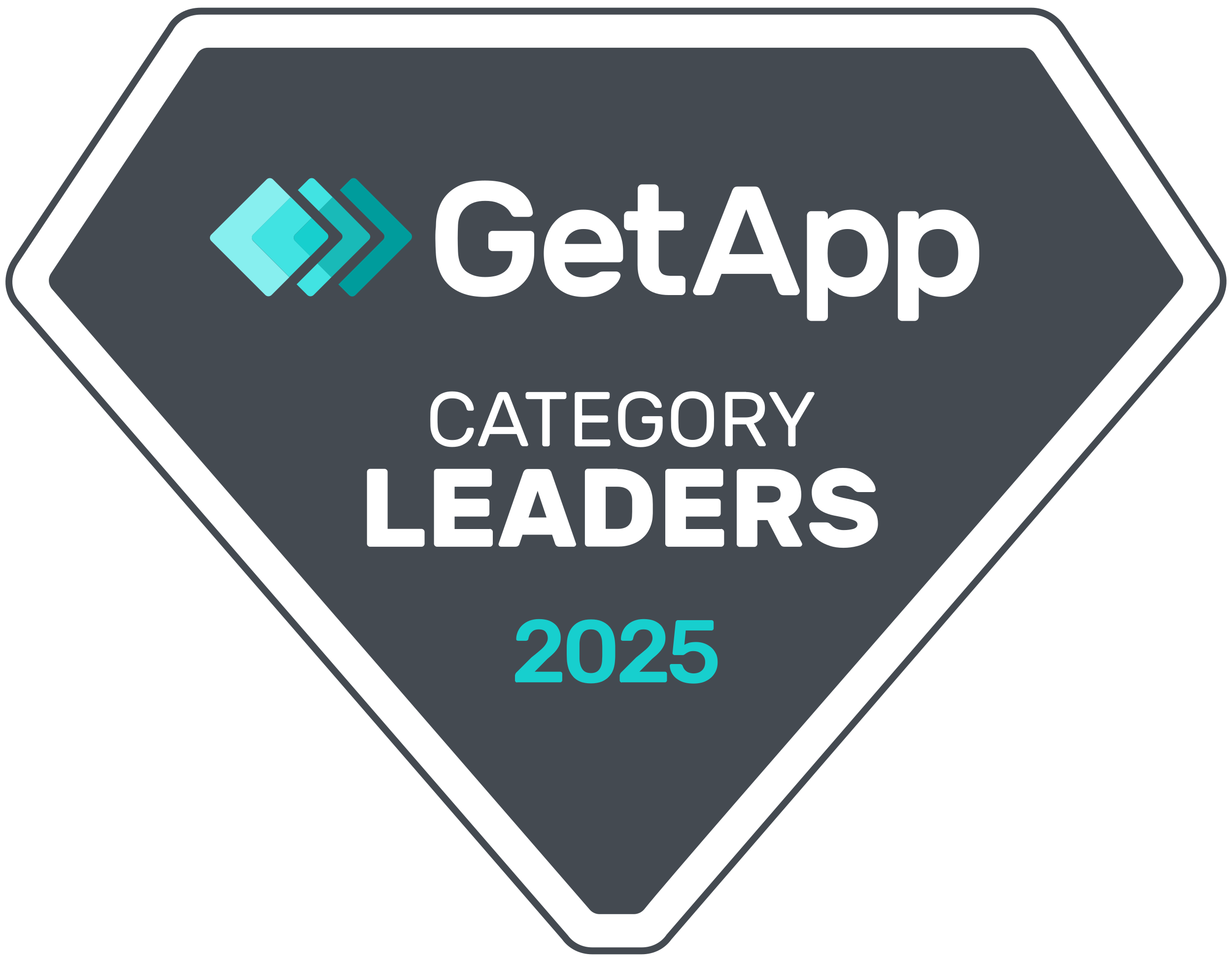What if the difference between a meeting that feels pointless and one that sparks results is just one thing: a clear, well-set goal?
Especially in Saudi Arabian boardrooms, where time is precious, stakes are high, and members have multiple priorities, clarity of purpose is everything. A meeting without a goal is like a ship without a destination. It may drift along, but it’s not getting anywhere.
That’s where effective goal setting comes in. When you’re intentional about what a meeting is meant to achieve, everything changes. Discussions are sharper. Decisions are clearer. And the people involved leave with a sense of direction.
In this piece, we’ll explore simple, practical strategies to set powerful meeting goals, whether you’re leading a board meeting in Riyadh, a strategy session in Jeddah, or an executive update anywhere in the world.
What is a meeting goal?
A meeting goal is basically the reason you’re having the meeting in the first place. It’s the purpose, the “what are we trying to get done here?” When there’s a clear goal, people come in prepared, conversations stay focused, and actions move forward, whether that’s approving a proposal, finalising a decision, or aligning on next steps.
Board meetings can truly be powerful events where directors, founders, and members get great feedback, ideas, and strategic direction. But, contrary to the common notion, board meetings don’t deliver maximum value. Setting the right goals can solve this polarising problem, and can make all board meetings highly productive and create a positive experience for everyone on the board.
A good meeting goal also shapes how people prepare. For example, if the board knows the goal is to finalise the risk mitigation strategy for a high-profile real estate investment, the CFO comes ready with financial forecasts, the legal advisor has compliance documents in hand, and the strategy team has done the market analysis.
Given that Saudi Arabia is positioned strategically to become a global hub for quantum technology, a lot of focus needs to be laid on securing talent, systems, processes and capabilities, to bring out breakthroughs in multiple domains. This is only possible if these are talked about in discussions, particularly in structured meetings.
The Importance of Setting Meeting Goals for Saudi Arabian Boards
In Saudi Arabian boardrooms, where time is money and decisions shape the future of billion-riyal enterprises, clear meeting goals are essential.
- The role of the board is expanding; they are being expected to deliver more, faster and precise, as decisions have to be fail-proof. With such pressure amidst uncertain global situations, boards have a herculean responsibility on their shoulders. Having properly structured meeting goals is the first step to attaining better results.
- In Saudi business culture, hierarchy matters. When senior executives or board members set aside time for a meeting, it had to be productive. A well-defined agenda ensures the chair, CEO, and other key decision-makers know exactly what outcomes to expect.
- Saudi Vision 2030 is pushing businesses to move fast, innovate, and make impactful decisions. Meetings without defined goals waste precious time.
The CMA (Capital Market Authority) and SAGIA (Saudi Arabian General Investment Authority) have stringent governance standards. Meetings with clear goals help ensure that board discussions meet regulatory and legal requirements. - Saudi boards are increasingly letting direct consumers influence board meeting agenda, to better cater to their needs and preferences. That means tailoring board meeting goals to suit them, and to structure agenda so that they aren’t bogged down by legal minutiae, or talked down to.
- Research states that almost 47% of board members in the KSA region feel operational involvement happens frequently, and board meetings are dominated by day-to-day issues, leaving minimal time for future planning or crisis management. Setting goals upfront, while keeping in mind what we want to achieve in the short, medium and long-term helps appropriate prioritisation.
Types of Meetings and Meeting Goals
Most boards are either setting goals incorrectly or aren’t setting goals at all. Here’s how you set goals for different types of meetings to get the most out of them.
1. Information Meetings
These are the low-pressure, high-clarity meetings. Board members are not here to make big decisions, you’re here to share important updates, and give visibility about what’s happening across the business. These are the meetings where board members keep leadership aligned, especially important in boards where members might be spread across different sectors, regions, or even generations.
In Saudi boardrooms, this kind of meeting is often used to share financial reports, market updates, regulatory developments, or Vision 2030 alignment progress. It’s also where the CEO or executive leadership might present major developments before moving toward a later decision-making meeting.
Meeting Goal Example:
Keep it sharp and clear. “To present Q3 financial performance and highlight key risks and opportunities” or “To update the board on current ESG compliance progress and targets.” Don’t fall into the trap of just “reporting”, always ask what we want the board to walk away with.
2. Input Meetings
Input meetings are where the board is called in to discuss, challenge, and contribute ideas, not necessarily to approve anything yet. This is where you ask for advice, test scenarios, explore strategic directions, or get responses before a final decision. Pick 2-3 pressing issues you need to address, include any background information in the board decks you need to include and allot 20-30 minutes per issue.
If you need board members to take on assignments, send them well ahead of the board meeting, using a board portal like Convene.
In Saudi boards, these are especially useful when you’re dealing with big shifts, like entering a new market, launching a transformation initiative, or considering a strategic partnership. It’s also a culturally appropriate way to build consensus, especially when dealing with diverse board members or senior stakeholders whose buy-in is critical.
Meeting Goal Example:
Be specific about what kind of input you’re looking for. “To gather feedback on the proposed 5-year digital transformation roadmap,” or “To explore the board’s perspectives on entering the Egyptian retail market.”
3. Approval Meetings
You’ve already had the discussions, shared the background, and taken in everyone’s thoughts. Now, it’s time to decide and vote. That’s what approval meetings are all about, making the call and moving forward.
In Saudi boardrooms, these meetings tend to have a more serious, structured tone. They often revolve around high-stakes topics, approving the annual budget, signing off on a major investment, appointing a new CEO, or giving the green light for a merger. Especially when it ties into something as significant as Vision 2030, there’s a strong sense of duty in the room. Every decision is a step that impacts not just the company, but potentially the sector or national priorities too.
Because of that, preparation is everything. Board members walk into the room expecting clarity and structure. The agenda is usually locked down in advance, and board packs are circulated using a board management software like Convene days before. No one wants to spend time on back-and-forths here, especially in meetings.
Meeting Goal Example:
Goals should be specific and outcome-focused. For example: “Approve the FY2026 capital allocation across business units.”, “Approve the appointment of the recommended CEO.”, and “Sign off on the proposed JV structure with the logistics partner.”
Setting a clear, single decision per agenda item helps everyone stay on track. If the meeting starts drifting into new discussions, that’s usually a sign that the proposal isn’t ready for approval, and it might need to go back into an input meeting instead.
4. Mandate Meetings
Mandate meetings are where you assign authority, whether that’s giving the CEO permission to negotiate a deal, forming a new committee, or delegating responsibility for a specific initiative.
These meetings help avoid a common challenge in boards: “Everyone thought someone else was doing it.” When mandates are vague, accountability slips. But when they’re clear? Things move fast and cleanly.
Meeting Goal Example:
Clarify action and authority. “To mandate the investment committee to explore opportunities in AI startups,” or “To authorise the chairman to lead negotiations for a joint venture in the UAE.”
Spell out the scope, timeline, and reporting expectations.
5. Problem-Solving Meetings
These are high-energy, often high-stakes meetings where the goal is to solve an urgent or complex issue. It could be a financial challenge, a reputational issue, a governance concern, or an internal conflict.
In Saudi boards, where reputational risk, trust, and long-term stability are everything, problem-solving meetings are delicate. You need to manage the room carefully, as there may be emotion, power dynamics, or even generational conflict in the mix.
Meeting Goal Example:
Get to a solution, or at least a path forward. “To develop a short-term turnaround plan for the underperforming hospitality division,” or “To align on a response to the regulatory breach report. Be honest and focused. Don’t try to sugarcoat the issue.
Strategies for Effective Goal Setting in Meetings
- Vague goals like “review operations” or “discuss sales” don’t guide anyone. Instead, try something like “identify 2-3 high-priority risks in current operations to be escalated for board review” or “finalise targets for Q2 sales incentives.” Specific goals result in clear direction..
- You may want to get five things done in one meeting, but the truth is, attention spans and meeting time are both limited. One strong goal is better than five scattered ones.
- Don’t wait until people are seated at the table. Put the goal in the meeting invite on the board portal, or better yet, right at the top of the agenda pack. When people know what they’re aiming for, they’ll come better prepared and contribute more purposefully.
- Especially if the discussion is complex, it’s okay to pause and say, “Let’s come back to our original goal, are we still on track to achieve it by the end of this session?” It helps re-centre the group without cutting anyone off.
The beauty of setting strong meeting goals is that it builds a rhythm of accountability. People begin to expect that meetings have a point, and that something concrete will come out of them. Over time, this changes how your entire board or leadership team shows up.
Create Actionable Meeting Goals with Board Portal
Traditional meeting prep can be hard. Emails flying around, last-minute agenda changes, version control issues with board packs, missing documents, it’s all too common. And when your meeting goals depend on everyone arriving prepared, these friction points can derail everything before the session even starts.
Convene solves this beautifully. This leading board portal software lets you set and share meeting goals upfront, right inside the meeting agenda. So instead of attendees hunting through their inboxes, they log in, see the agenda, and clearly understand what the meeting is aiming to achieve, well before they walk into the room (or join remotely). You can even pin key goals or expected outcomes to the top of each agenda item, so the purpose behind every discussion point is obvious.
For board secretaries and chairs, Convene also makes it easier to design meetings with intention. Want to focus on a decision? Set up voting features right on the platform. Need to walk through performance dashboards? Embed the relevant documents in the agenda itself. That way, the goal of “Approve Q1 performance report” becomes a clearly facilitated action with all the materials right there.
Another underrated benefit? Time discipline. Convene lets you timebox agenda items and nudge the meeting back on track if a discussion runs long. That’s essential when you’re trying to keep focused on the original goal, especially in longer board meetings where it’s easy to get sidetracked.
Contact us today for a product demo and decide for yourself.
Nina is a Digital Marketing Manager of the global marketing team at Convene. She has profound knowledge of the growing trends within the board management software market. With her ample experience in marketing and corporate solutions, she authors in-depth articles that teach companies about the features and benefits of board portals.







